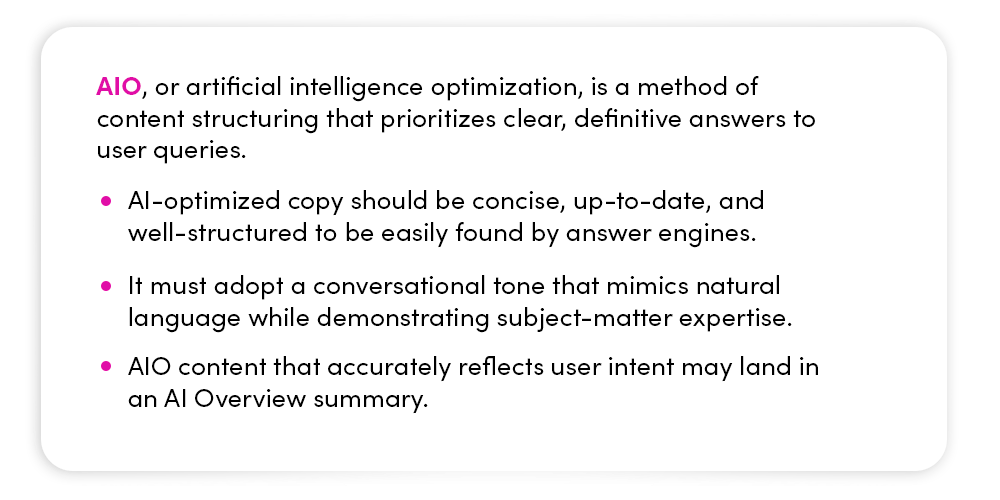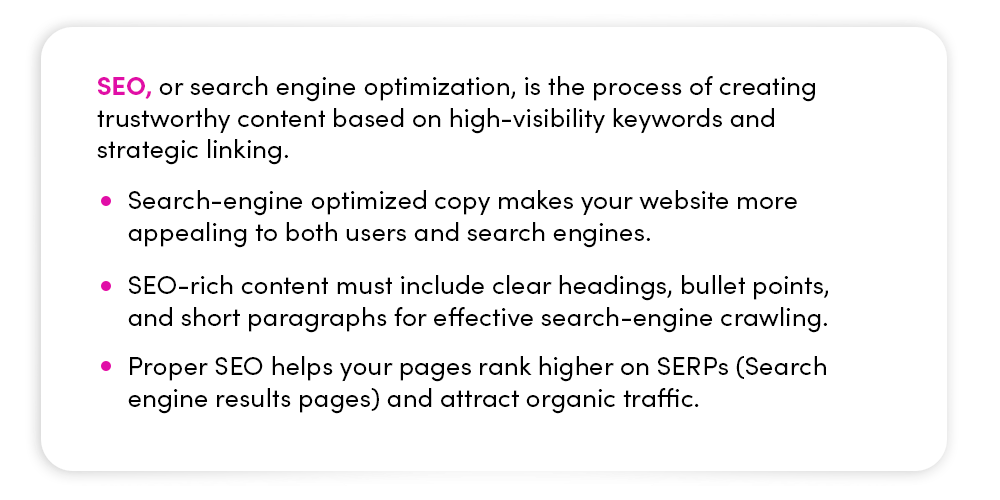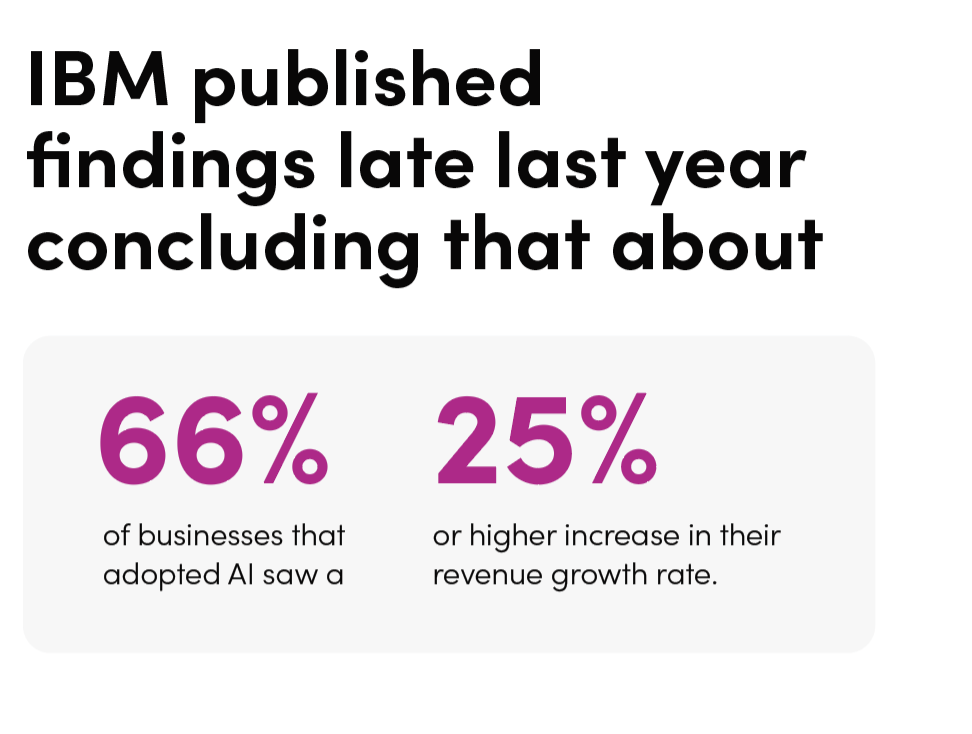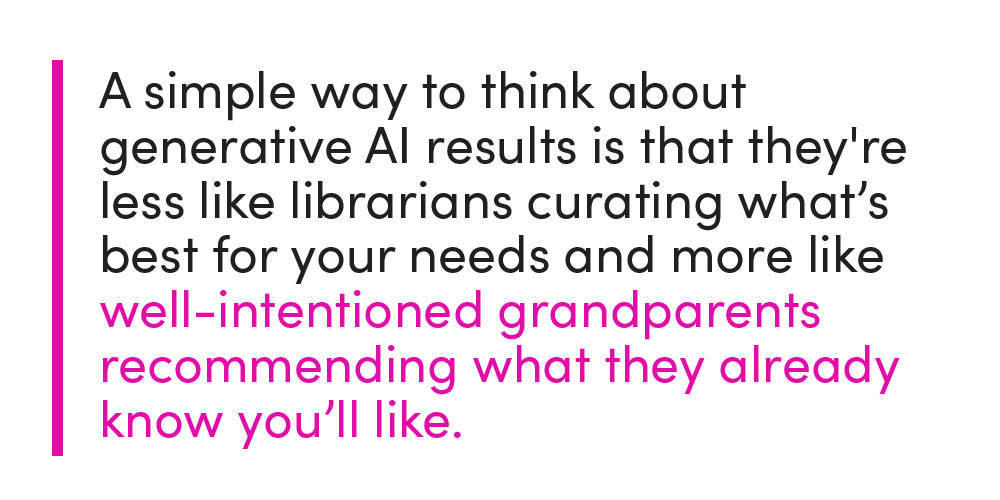Less than a decade ago, SEO was the VIP ticket to website traffic, email subscriptions, and sales. Global company or burgeoning brand, search engine optimization gave you the coveted digital edge of landing above the fold. The past few years, however, have launched an entirely new form of online optimization, and the driving force is artificial intelligence.
Like most new technologies, AI optimization has quickly risen to trend-setting levels of popularity. Every blog recommends it, every expert heralds it as the future of digital marketing — but without a deep understanding of how AI search optimization works, how it compares to search engine optimization, and which option yields the best results, AI optimization is little more than a buzzword.
Join (human)x as we unlock the secrets of both methods and explore how SEO and AIO might actually work best in tandem to give your marketing campaigns the best chance at success.
Defining AI Optimization & Search Engine Optimization: What’s the Difference?
Before we determine a winning strategy and investigate ways to implement it, let’s define our terms. While there are similarities in AIO and SEO outcomes, their differences lie in their approaches to content structure.


TL;DR: SEO gets you found, AIO makes you useful, and both require structured, authoritative content to be successful at the ultimate goal of raising brand awareness.
AIO vs. SEO: Which Optimization Wins?
Ask any online search engine to declare a winner between AIO and SEO and you’ll be wading through pages of conflicting answers.
- Some marketing authorities claim that SEO is dead and AI optimization is the future.
- A handful of voices believe that SEO is for beginners, while AIO is the more advanced marketing technique.
- Multiple experts, including our team here at (human)x, are certain that an integrated approach utilizing both technologies is best.
Rather than rely on niche opinions, we prefer to base our recommendations on facts, so here’s a glimpse into the conversion lift your brand could anticipate when incorporating each type of optimization:
AIO Lift: According to a comprehensive HubSpot analysis of AI-optimized content, AIO delivers significantly stronger conversion performance. Specifically, the company’s findings noted that e-commerce marketing campaigns constructed around AI optimization generated a 37% higher conversion rate than traditional campaigns, with other industries experiencing up to a 52% conversion lift. What’s more, IBM published findings late last year concluding that about 66% of businesses that adopted AI saw a 25% or higher increase in their revenue growth rate.

SEO Lift: Newly released SEO statistics from 2024 and 2025 highlight the continued impact of search engine optimization on conversions, including the undeniable facts that moving up a single position in Google search results can increase the click-through rate by 2.8%, SEO drives 1,000% more traffic than organic social media, and SEO leads have a 14.6% close rate.

The AIO/SEO Overlap: A Marriage of 2 Approaches
The question of AIO vs. SEO is answered by “and,” not “or.” Although marketers from various industries love to highlight all the ways these strategies diverge, they actually have more in common than most people realize. With this in mind, it’s easy to see why the best way to future-proof your marketing strategy is by integrating a combination of the two — and that’s not just our opinion, it’s backed by hard data.
- AI Overviews, the newest Google-based generative search tool that appears at the top of every new user inquiry, sources its information from websites that display the most relevant, reader-friendly content; essentially, content that’s SEO-driven.

- The highest-ranking SERP sites and the most-sourced AI Overview pages can go hand-in-hand. Both require high-quality, informative, and engaging content. In essence, SEO-backed copy lays the foundation with strong keywords, layouts, and backlinks, then passes the ball to AIO so your content can play nice with voice-assisted searches and other generative search responses.
The (human)x Perspective on AIO vs. SEO
As a leading digital marketing agency, it’s our duty at (human)x to stay ahead of the technology curve for the sake of our clients. To that end, our staff has long been experimenting with AI and answer-engine optimization for years. Here’s a closer look at our company’s personal AIO vs. SEO perspective.
First, we’ve noticed two massive changes between traditional SEO- and AI-driven search results: volume and control. Just a few years ago, any Google search was answered with 10 or more clickable links, a system that gave brands of all sizes a fair shot at earning great SERP rankings. The process of selecting which webpages received these higher SERP scores was relatively democratic, enabling the most relevant, organized, and trustworthy content to win top billing. Since Google launched its Search Generative Experience and large language models, however, we’ve noticed that answers to user inquiries are now being culled and generated from a much narrower set of sources – in some cases, no more than two or three webpages.
So, what’s really at play here?
- It seems that generative search answers are largely brand-driven – which means content from your small business might never be seen, even if it ranks well.
- Brand search volume (people looking for your brand by name) now plays a much bigger part in deciding which pages grab AI Overview attention.
- High-authority links and mentions are even more critical in today’s AI-powered searches.

AI responses prioritize what’s familiar, trusted, and popular instead of information that’s the most up-to-date, accurate, or detailed.
Stay Competitive With Balanced AIO & SEO
To compete in this new AIO/SEO landscape, your brand can no longer simply optimize its content for searchers. You must also play by the rules of both systems to earn a coveted spot in generative search responses or search-engine result pages. Based on the evolving AI observations we discussed above, it’s clear that good content and user experience still matter, but claiming visibility in an AI-first search environment will also require three specific pillars:
- Brand presence
- Authoritative signals and links
- Structured, accessible content
If balancing AIO and SEO seems tedious or if adding these three pillars to your marketing strategy sounds like a task you’d rather not add to your team’s plate, (human)x can fill in the gaps. We’re a trusted digital marketing resource for brands across the country, some household names and others that are just beginning to scale. Our experts have a proven record of success in search engine and AI optimization; let today be the day we add your brand to our list of highly profitable clients.
